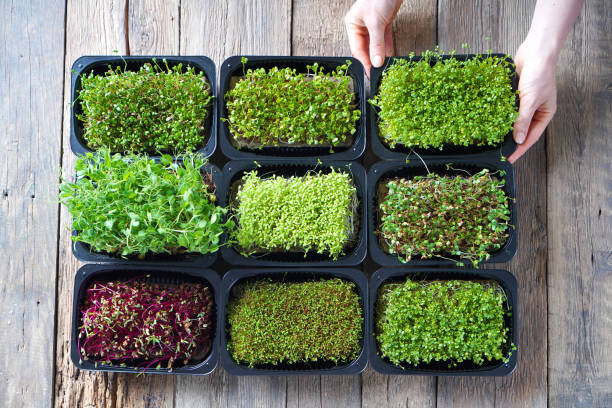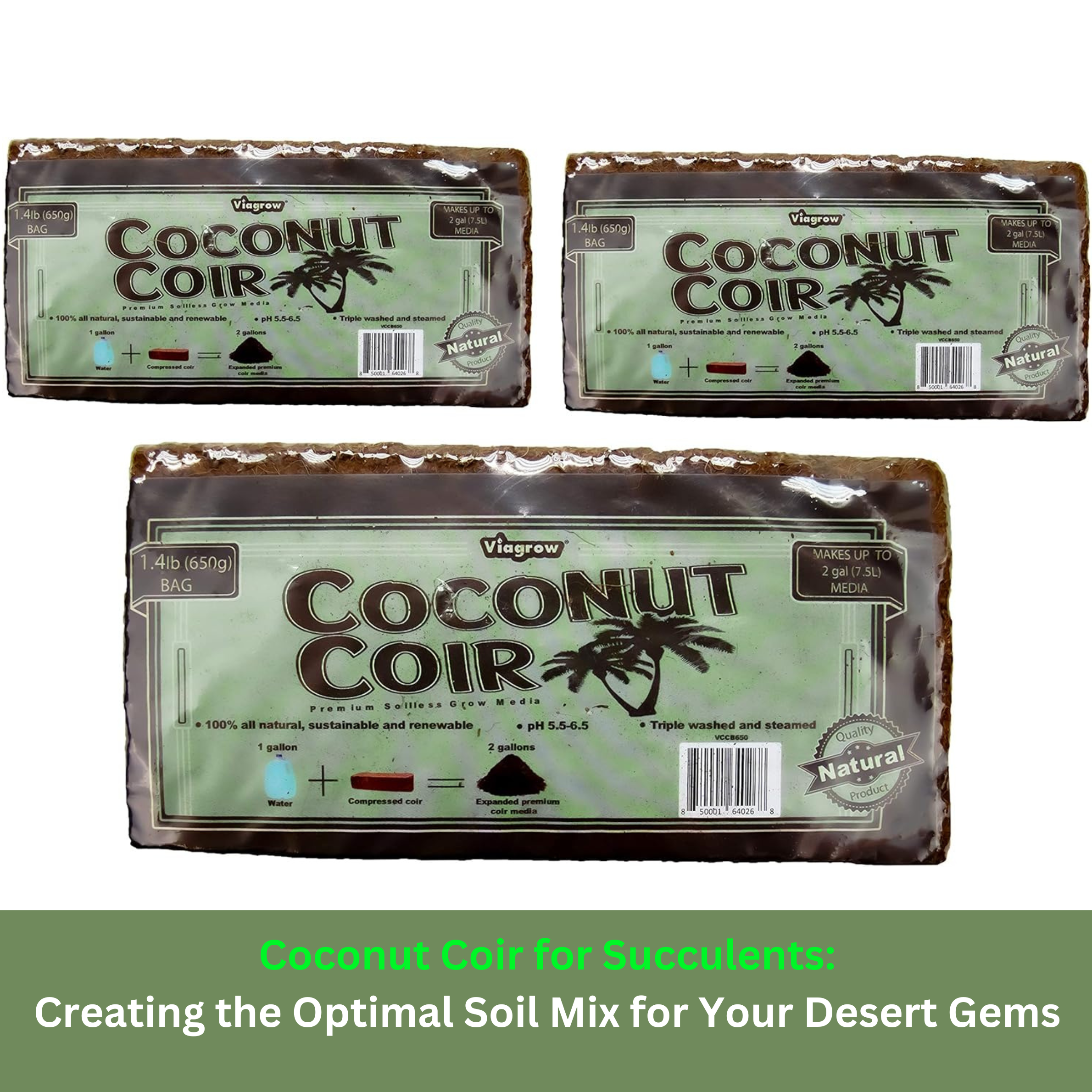Microgreens, the young seedlings of edible vegetables and herbs, have taken the culinary world by storm. These tiny powerhouses of flavor and nutrition are not only popular in high-end restaurants but are also becoming a staple in home kitchens. As the demand for these miniature greens grows, so does the need for efficient and sustainable growing methods. One crucial factor in successful microgreen cultivation is choosing the right growing medium. Enter coconut coir, a versatile and eco-friendly substrate that's proving to be an ideal choice for microgreen enthusiasts. This natural fiber, derived from coconut husks, offers a perfect environment for these delicate seedlings, promoting rapid growth and vibrant flavors.
Why Coconut Coir is Perfect for Microgreens
Coconut coir boasts several properties that make it an excellent medium for microgreen cultivation. One of its standout features is its superior water retention and aeration capabilities. Microgreens require consistent moisture to germinate and grow quickly, but they're also susceptible to damping off if the growing medium is too wet. Coconut coir strikes the perfect balance, holding enough water to keep seeds and young roots hydrated while allowing excess moisture to drain away. This balance helps prevent common issues like mold growth and root rot.
The fibrous nature of coir also provides excellent aeration, ensuring that delicate microgreen roots have access to oxygen. This promotes stronger root development and, consequently, healthier and more vigorous top growth. The loose structure of coir allows microgreen roots to penetrate easily, supporting rapid growth during their short growing cycle.
Another significant advantage of coconut coir is its natural sterility and resistance to diseases. Unlike soil, which can harbor pathogens, coir comes virtually free of harmful organisms. This sterility is crucial for microgreens, which are harvested at such a young stage that they're particularly vulnerable to diseases. By starting with a clean growing medium, you significantly reduce the risk of crop loss due to pathogens.
From a practical standpoint, coconut coir is incredibly easy to use. It's lightweight, making it simple to handle and distribute in growing trays. It also retains its structure well, reducing the need for frequent replenishment or replacement. This ease of use makes it an excellent choice for both commercial growers and home enthusiasts.
Sustainability is another key benefit of coconut coir. As a byproduct of the coconut industry, coir utilizes a resource that would otherwise be discarded. Its production has a lower environmental impact compared to peat-based media, aligning perfectly with the eco-conscious ethos of many microgreen growers.
Setting Up a Microgreens Growing System
To start growing microgreens in coconut coir, you'll need a few basic materials:
- Coconut coir (compressed bricks or loose)
- Shallow growing trays with drainage holes
- A spray bottle or misting system
- A light source (natural sunlight or grow lights)
- Microgreen seeds of your choice
Begin by preparing the coconut coir. If using compressed bricks, rehydrate them according to the manufacturer's instructions. Once expanded, fluff the coir to ensure it's loose and airy. Fill your growing trays with about 1-2 inches of prepared coir, smoothing it out to create an even surface.
To sow your microgreen seeds, sprinkle them evenly over the surface of the coir. Different microgreen varieties have different seeding densities, so follow the recommendations for your chosen seeds. Gently press the seeds into the coir surface using a flat object like a clean piece of cardboard. This ensures good seed-to-medium contact without burying the seeds too deeply.
Mist the surface thoroughly with water using a spray bottle or fine mister. Cover the tray with a clear lid or plastic wrap to create a greenhouse effect and maintain humidity during germination.
Caring for Microgreens in Coconut Coir
Proper care is crucial for successful microgreen cultivation. Here are some key aspects to focus on:
Watering and Humidity Management:
Keep the coir consistently moist but not waterlogged. Mist the surface regularly or bottom-water by placing the tray in a shallow container of water for a few minutes, allowing the coir to absorb moisture from below. Once seeds have germinated and sprouted, gradually reduce humidity by removing covers and increasing air circulation.
Light Requirements:
After germination, expose your microgreens to light. While some varieties can grow in indirect sunlight, many perform best under grow lights. Provide 12-16 hours of light per day, keeping the light source close to the greens to prevent stretching.
Monitoring and Harvesting:
Watch your microgreens closely as they grow. Most varieties are ready to harvest in 7-14 days when they've developed their first true leaves. To harvest, cut the stems just above the coir surface using clean, sharp scissors.
Troubleshooting Common Issues
While coconut coir provides an excellent growing environment, you may encounter some challenges:
Mold and Fungal Problems:
If you notice white, fuzzy growth on the coir or seedlings, it's likely mold. Improve air circulation, reduce watering, and consider using a small fan to move air across the growing surface.
Uneven Growth:
Ensure even seed distribution and consistent moisture across the tray. Rotate trays regularly if using artificial lights to promote uniform growth.
Nutrient Deficiencies:
While microgreens grow quickly and often don't require additional fertilization, you may notice yellowing leaves in some varieties. A light application of diluted liquid seaweed or a balanced hydroponic nutrient solution can help.
To maximize yield and quality:
- Maintain consistent growing conditions
- Keep tools and equipment clean to prevent disease spread
- Experiment with seed density to find the optimal balance for each variety
- Harvest promptly to ensure peak flavor and nutrition
Grow Nutritious Microgreens with Coconut Coir
Coconut coir offers an excellent growing medium for microgreens, providing the perfect balance of moisture retention, aeration, and sterility. Its ease of use and sustainability make it an ideal choice for both beginners and experienced growers. By using coconut coir, you're not only setting yourself up for microgreen success but also making an environmentally conscious choice.
We encourage you to start your microgreen journey with coconut coir. Whether you're looking to add fresh, nutrient-packed greens to your meals or exploring a new hobby, microgreens offer a rewarding and delicious experience.
For more tips on growing microgreens, sustainable gardening practices, and innovative cultivation techniques, be sure to explore our blog regularly. Happy growing, and enjoy your homegrown microgreen harvest!









Laisser un commentaire
Tous les commentaires sont modérés avant d'être publiés.
Ce site est protégé par hCaptcha, et la Politique de confidentialité et les Conditions de service de hCaptcha s’appliquent.